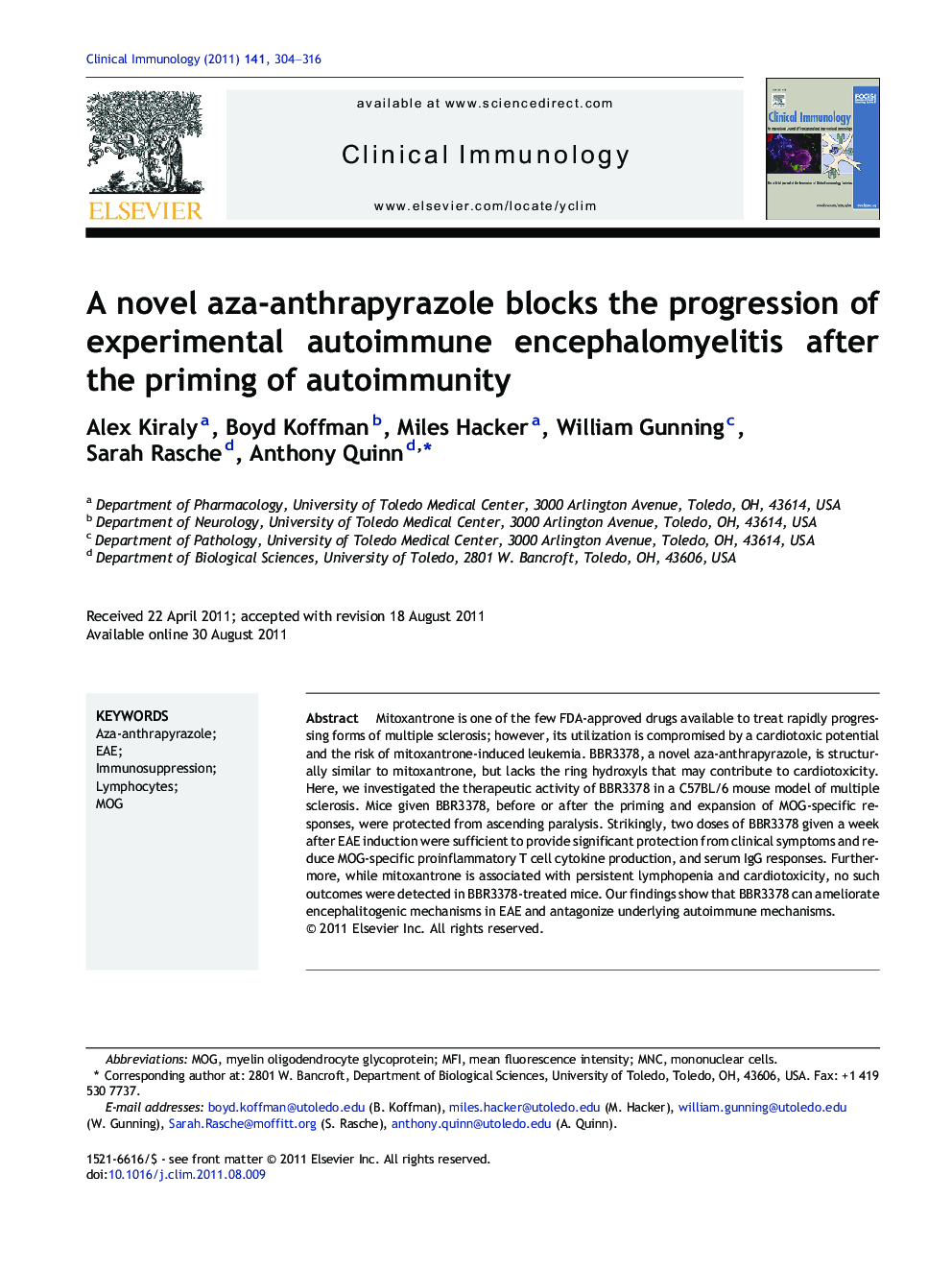| Article ID | Journal | Published Year | Pages | File Type |
|---|---|---|---|---|
| 3257197 | Clinical Immunology | 2011 | 13 Pages |
Mitoxantrone is one of the few FDA-approved drugs available to treat rapidly progressing forms of multiple sclerosis; however, its utilization is compromised by a cardiotoxic potential and the risk of mitoxantrone-induced leukemia. BBR3378, a novel aza-anthrapyrazole, is structurally similar to mitoxantrone, but lacks the ring hydroxyls that may contribute to cardiotoxicity. Here, we investigated the therapeutic activity of BBR3378 in a C57BL/6 mouse model of multiple sclerosis. Mice given BBR3378, before or after the priming and expansion of MOG-specific responses, were protected from ascending paralysis. Strikingly, two doses of BBR3378 given a week after EAE induction were sufficient to provide significant protection from clinical symptoms and reduce MOG-specific proinflammatory T cell cytokine production, and serum IgG responses. Furthermore, while mitoxantrone is associated with persistent lymphopenia and cardiotoxicity, no such outcomes were detected in BBR3378-treated mice. Our findings show that BBR3378 can ameliorate encephalitogenic mechanisms in EAE and antagonize underlying autoimmune mechanisms.
► A novel cytolytic compound is therapeutic in a mouse model of multiple sclerosis. ► BBR3378 suppressed CNS-specific T and B cell responses. ► BBR3378 inhibited clinical symptoms when administered after the onset of autoimmunity. ► BBR3378 induced transient lymphopenia.
